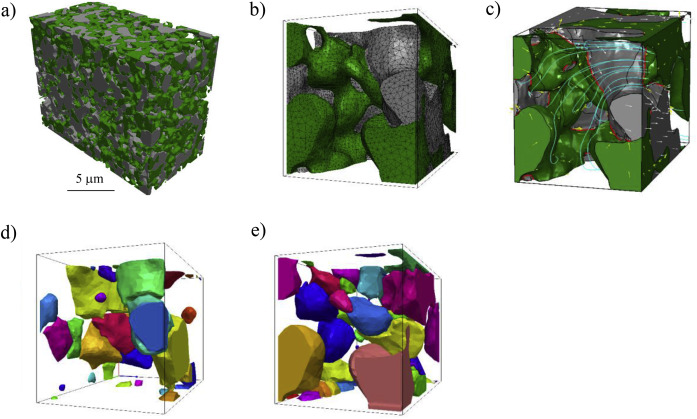A novel approach for the quantification of inhomogeneous 3D current distribution in fuel cell electrodes

The electrode microstructural properties significantly influence the efficiency and durability of many electrochemical devices including solid oxide fuel cells. Despite the possibility of simulating the electrochemical phenomena within real three-dimensional microstructures, the potential of such 3D microstructural information has not yet been fully exploited. We introduce here a completely new methodology for the advanced characterization of inhomogeneous current distribution based on a statistical analysis of the current of each particle within the microstructure. We quantify the large variation in local current distribution and link it to the particle size dispersion, indicating how particle coarsening can trigger further degradation. We identify two classes of particles: those transferring more current than average, which show 10–40% more particle-particle contacts, and those producing more current than average, characterized by ∼2.5 times larger three-phase boundary length per unit volume. These two classes of particles are mutually exclusive, which implies that up to the 30% of the electrode volume within the functional layer is underutilized. This fundamental insight goes well beyond the predictions of continuum modeling, allowing us to revisit the current standards regarding safe operating conditions and to suggest alternative strategies based on nanoparticleinfiltration, template-assisted synthesis and additive manufacturing for designing more durable electrodes.